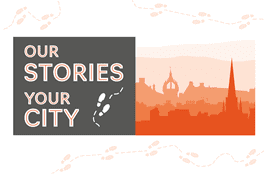Corporate Partnerships, News
Staying local with Mercat Tours
Our local walking tours
Local walking tours are THE best way to explore and uncover the extraordinary history of our Grassmarket and Cowgate neighbourhood.
GCP is so very lucky to have Mercat Tours as one of our much-loved, long-standing partnerships. The success of our relationship is rooted in our shared belief in the importance of community.
Building on the success of the ‘Our stories, your city’ initiative, Mercat has developed its fantastic range of walking tours for GCP Members and Volunteers.
Five bespoke Mercat Tours for GCP Members
The Mercat Tours and GCP partnership continues to go from strength to strength. We now have 5 bespoke Mercat walking tours, running in monthly rotation. Some of our Members have been on every one!
- The Old and New Town
- Secrets of the Museum
- The Royal Mile and Holyrood Palace
- The Ghost Tour
- The Grassmarket and Cowgate area
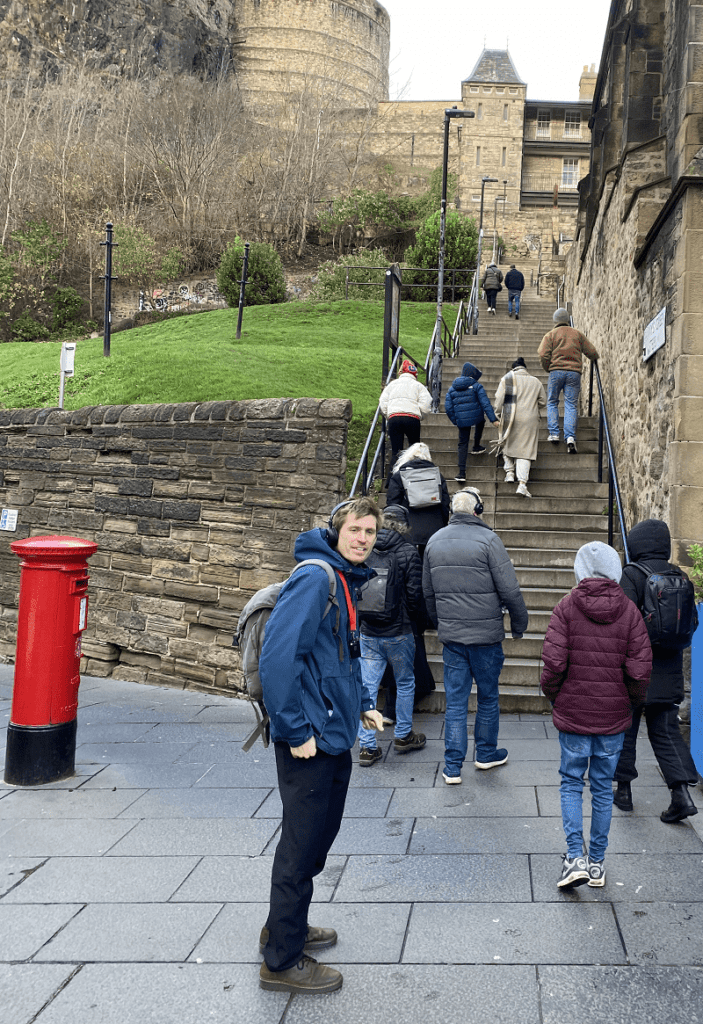
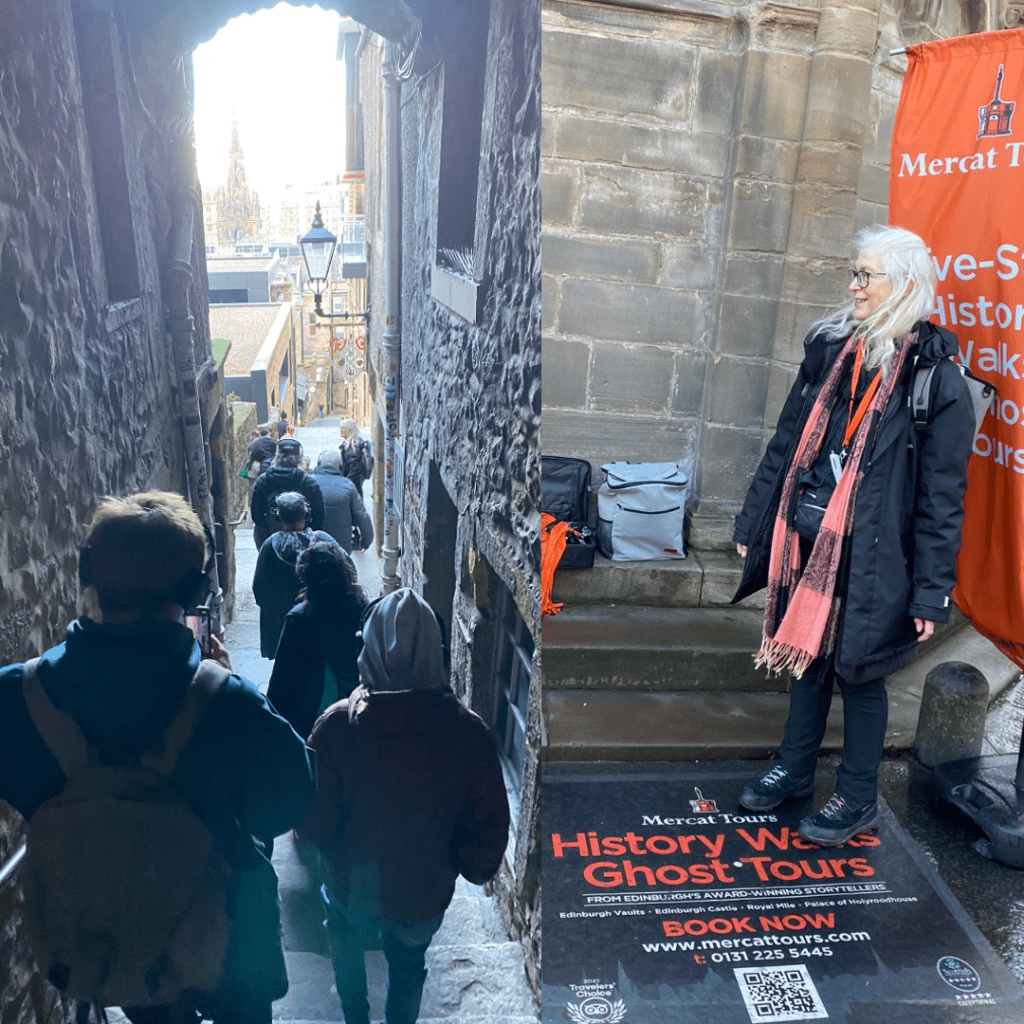
The Grassmarket and Cowgate walking tour
This new Mercat tour helps our Members and Volunteers orientate themselves and learn more about our local Grassmarket and Cowgate area, including the Grassmarket Centre, home of GCP.
There were ten of us on the inaugural tour in November 2023, including Jenny, who had just joined GCP,
‘The Grassmarket Community Project was recommended to me by a friend, and I am looking into different classes to join. This is a great tour to get to know the area better.’
Munirah has been on other Mercat tours,
‘I enjoy the interesting details and always learn something new!’
Our Mercat guide for the 90 minute tour was Nicky. She used to be a librarian, then began working with her second love, history, when her library closed. After 6 years as a costume interpreter at Stirling Castle, she moved to Mercat Tours,
‘I love telling stories and having a chatty group. The Grassmarket crowd today were obviously very interested and attentive. It was great to share stories together.’
Eight things we bet you didn’t know about our local history
By the end of the Grassmarket and Cowgate walking tour, everyone felt they had learnt more about our neighbourhood. Here are 8 facts we bet you didn’t know about either:
1. The five medieval local markets
We met at the Mercat Cross on the Royal Mile (which is actually 106 yards longer than a mile). Mercat means market and this area had an international trading licence granted way back in 1124.
There were at least five other markets to feed the 60-80,000 who lived in the medieval city; the Fishmarket, Fruit Market, Grassmarket, where grass fed animals were bought and sold, and the Lawnmarket, where farmers’ wives sold their fare, including types of cloth, butter and cheese.
2. The nasty bucket
In the medieval Old Town, houses stood even higher than they do today. Above the current stone levels there were originally up to 4-5 floors additional wooden floors, where people lived in poverty.
Inhabitants had to walk down, then up, 14 flights of stairs to pick up food, water from the wells and dispose of any waste. Not surprisingly, it was easier for residents to throw their human waste out in the ‘nasty bucket’, hopefully shouting ‘gardyloo’ as they did, to warn passers-by in the narrow streets below. As a result, streets were covered in waste and stank, so people wore outdoor ‘patten’ wooded sandals over their shoes to try and avoid the mess.
3. Cowgate and a king’s pink stockings
Cowgate valley, where the cows, sheep and pigs were driven into the city to sell, was always a very busy place. It was also at the bottom of the steep hill, so sewage from all the ‘nasty buckets’ and waste from the Fishmarket, would drain down.
As Cowgate was a very dark, steep, overcrowded and smelly part of town, the rich people of Edinburgh built South Bridge to avoid having to go down there! A second crossing, George IV Bridge, was built to celebrate the visit of the British king to Edinburgh. King George turned up wearing a short kilt and pink stockings!
4. Public health dilemmas
The wells, situated along the volcanic fault line from Holyrood to Fountainpark, provided drinking water for Edinburgh’s residents. The pipes carrying the water were made from hollowed-out elm wood, which was slightly poisonous, but also killed any bacteria. Given the lack of sanitation and dense population in the Old Town, avoiding bacteria was the more important public health need at the time.
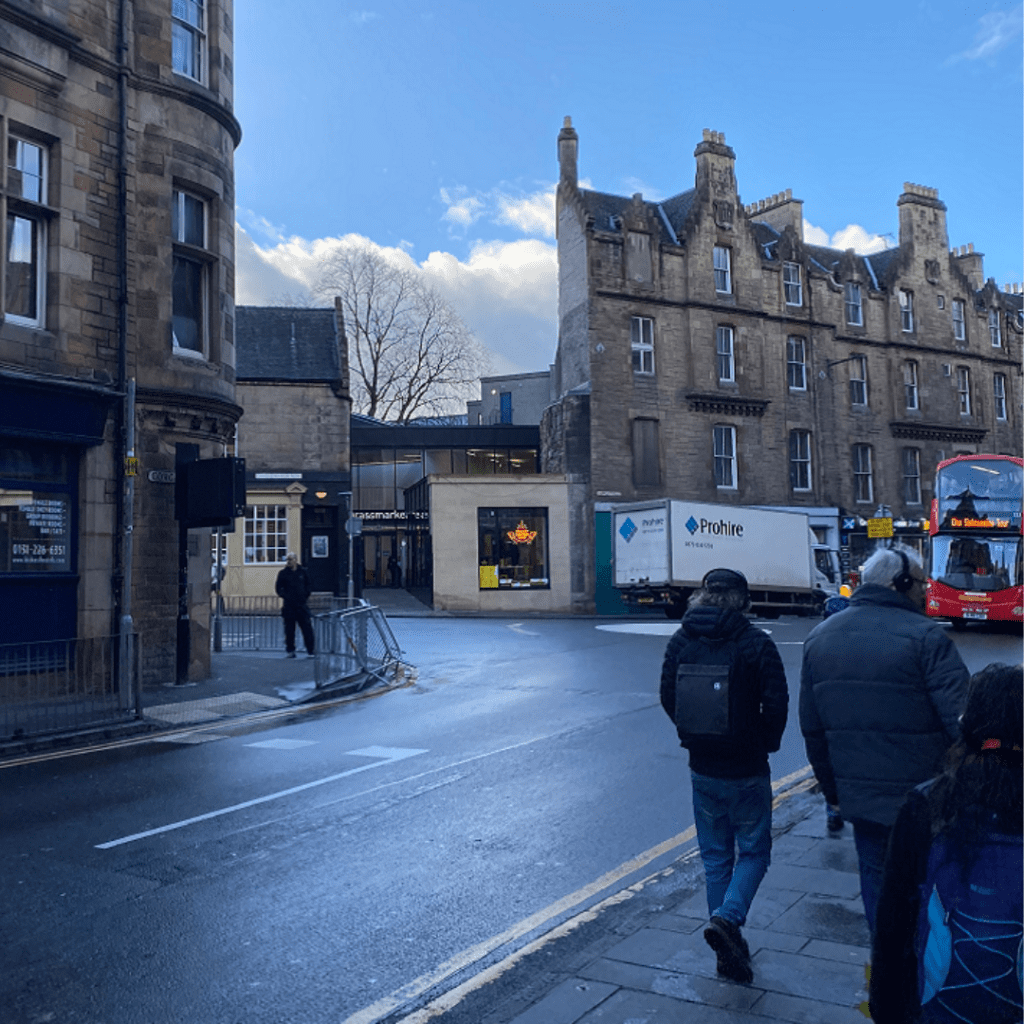

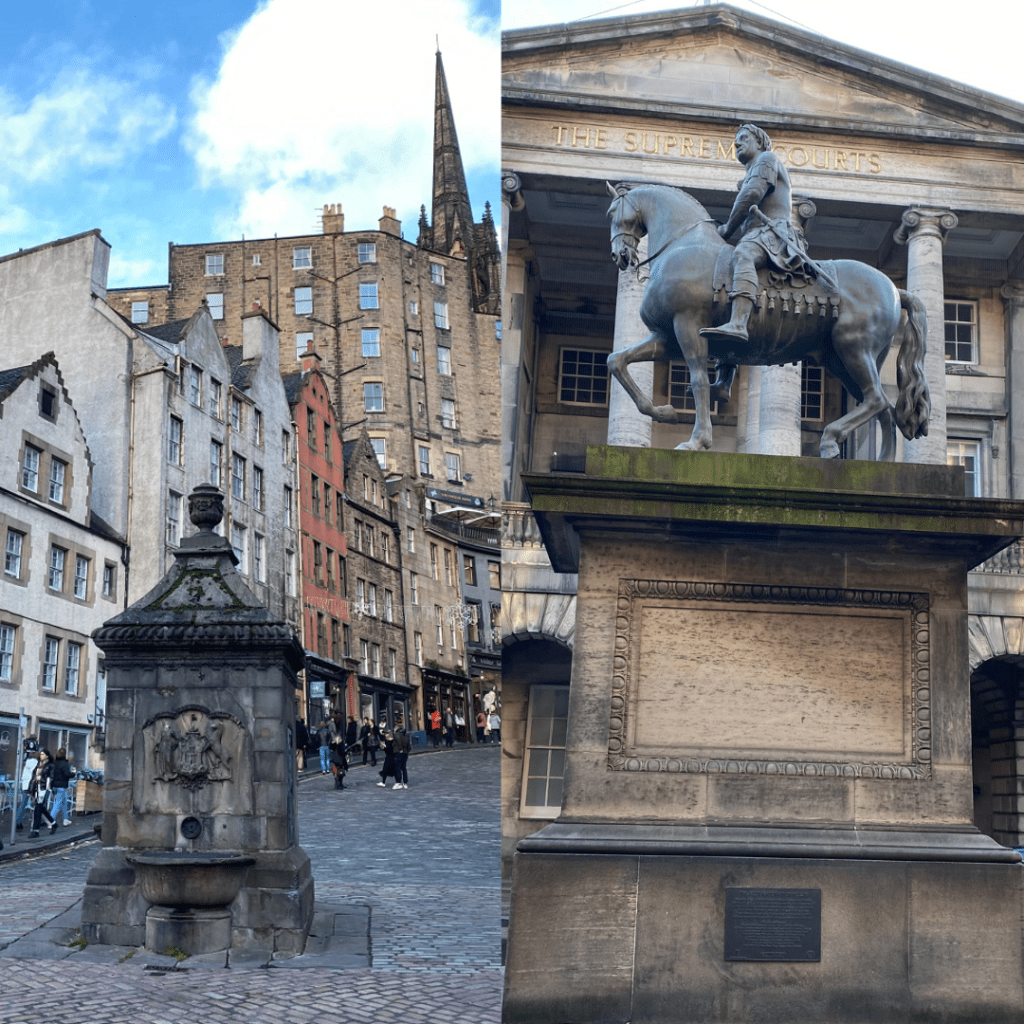
5. The piddling pony
Tucked around the back of the Royal Mile, you will find Old Parliament Square, where the law courts are today. A statue of Charles II on his horse was erected there in the 1630s. Made of lead, it was not robust and, over time, water collected in the belly of the horse, so a hole was made to let the water escape. The hole was positioned as such that the horse was known as ‘the piddling pony’ for generations, until it was finally, fully repaired in the 1970s (shame!).
6. Grassmarket pubs, a grisly history
Public hangings were common place and intended to dissuade people from doing bad deeds. This didn’t seem to work, however, as people came from as far away as Berwick-on-Tweed to watch a hanging at the Grassmarket. Such was the popularity that prices to rent rooms in local pubs sored! The last public hanging at the Grassmarket saw 60,000 people crammed into the area.
Two very old pubs are linked directly to this grisly past. The Last Drop pub name makes sense when you know the history, but Maggie Dickson’s pub needs more explanation. In the past, if an illegitimate child died, it was assumed to be murdered by the mother. Poor Maggie Dickson was hanged for the death of her child. She was put in a coffin and driven away in a cart. However, the bouncing on the cobbled streets revived her and she was heard banging on the coffin. After legal discussions, she was allowed to go free, but the law was changed for future hangings to include, ‘hung from the neck until you are dead.’
7. Glass windows went on holiday with you
Glass was very expensive and a luxury in medieval times, which is why windows were often half shutter and half glass. Only rich people could afford glass and when they went away, they would remove the glass and store it carefully to ensure it didn’t get stolen. They would also take their glass with them when they moved house. Even if windows had glass in them, they were often left open, especially in shops. There was a need for fresh air to avoid diseases and allow dangerous carbon monoxide from fires to escape. This is why a lot of old Edinburgh houses are drafty, they were built to encourage ventilation not to keep in the warmth!
8. Unwelcome and welcome visitors
A small Close, like Advocate’s Close has many secrets, including how to ward off evil or welcome guests. In the past, people used to eat oysters as they were so cheap and easily available. Oyster shells were added to the stonework when Close walls were built. As oysters came from the sea, and water was supposed to fend of witches, it was hoped the shells would stop witches coming inside.
Given the number of floors in the big Old Town tenements, an iron ‘risp’ was positioned on the Close, which people could rattle with a stick and call out the name of those inside when they visited. A key could then be lowered to the guest and they could enter.
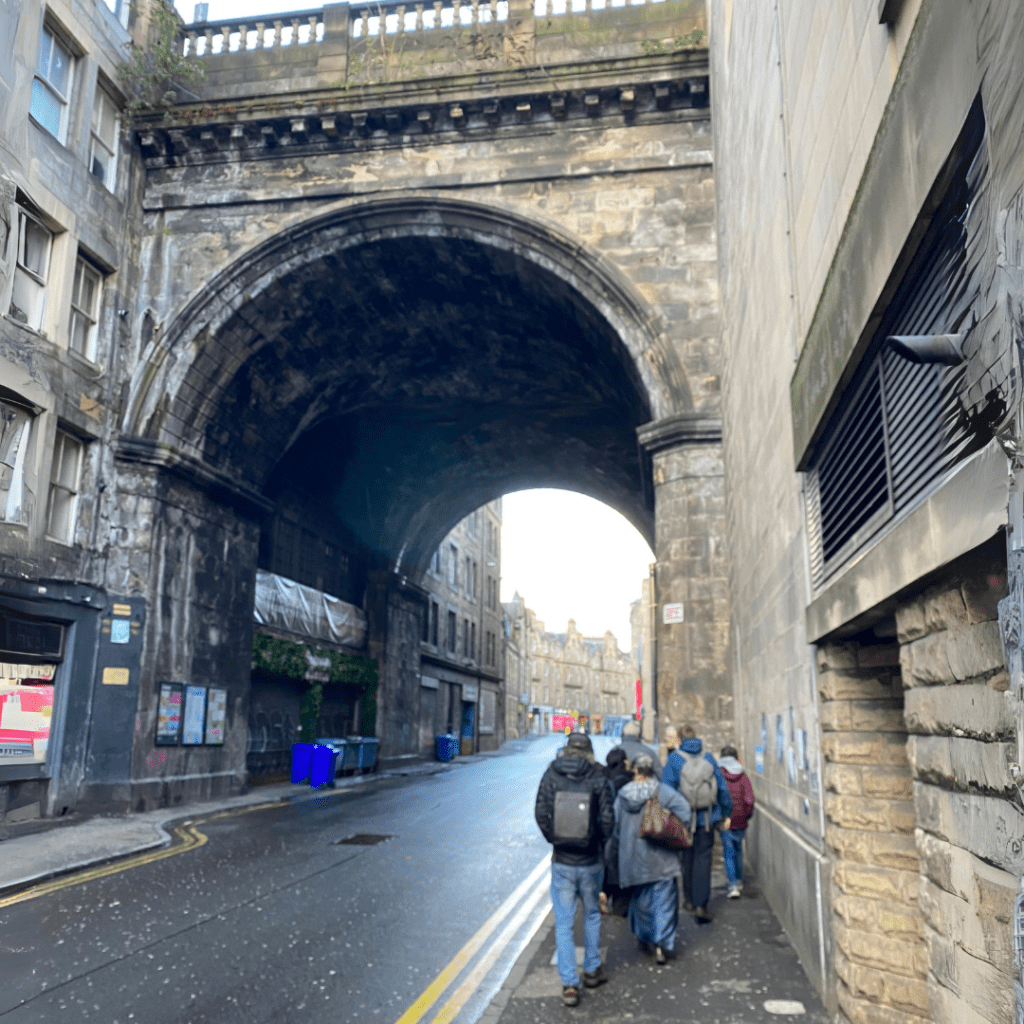
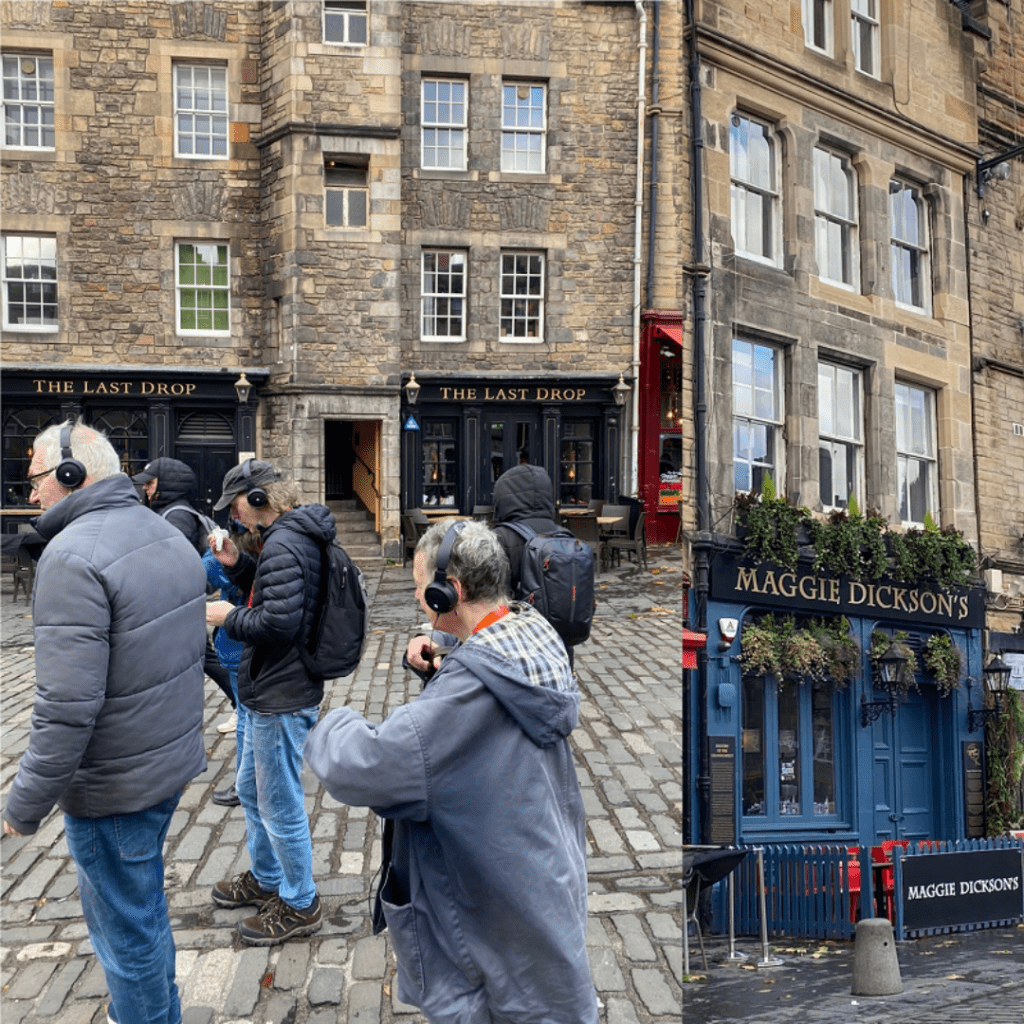
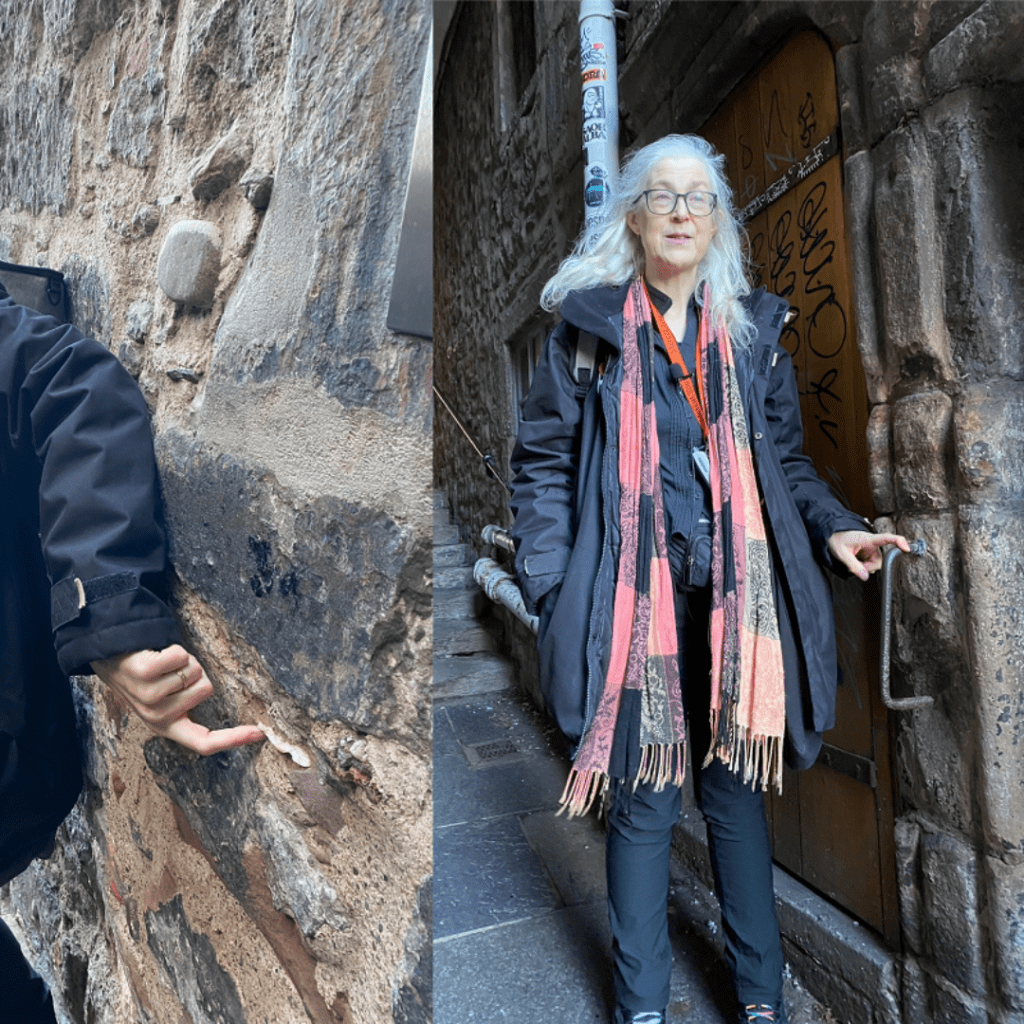
Our partnership with Mercat Tours
Established in 1985, Mercat Tours is an award-winning company leading History Walks and Ghost Tours around Edinburgh. Mercat Tours is a community-minded company and our relationship started in 2012, when Kat commissioned The Grassmarket Community Project’s Wood Workshop to help kit out Mercat’s offices. The project involved upcycling 9 church pews for bespoke furniture.
We continue to enjoy building on our many collaborations with Mercat Tours including Our Stories, Your City. Our Members also benefit hugely from our residentials in the Mercat House in Birnam, Perthshire where Mercat Tours kindly offer us their 13 bed private holiday home to rest and relax. Back in the city, Mercat Tours regularly sponsor activities and donate prizes to our fundraisers, including our Burns Night events.
Thanks to Mercat’s inspiring CEO and our friend Kat Brogan, and her team for all their support.

Contact Mercat Tours
” History is a damn good story.
What it needs is a damn good telling. “
A BIG THANK YOU
The Grassmarket Community Project’s Members Programme relies on the generosity of our customers, funders and donors. Our key funders for this area of our work are Nationwide Community Grants, The Robertson Trust and EVOC/Scottish Government Communities Mental Health and Wellbeing Fund. We thank them for their essential continued support.

